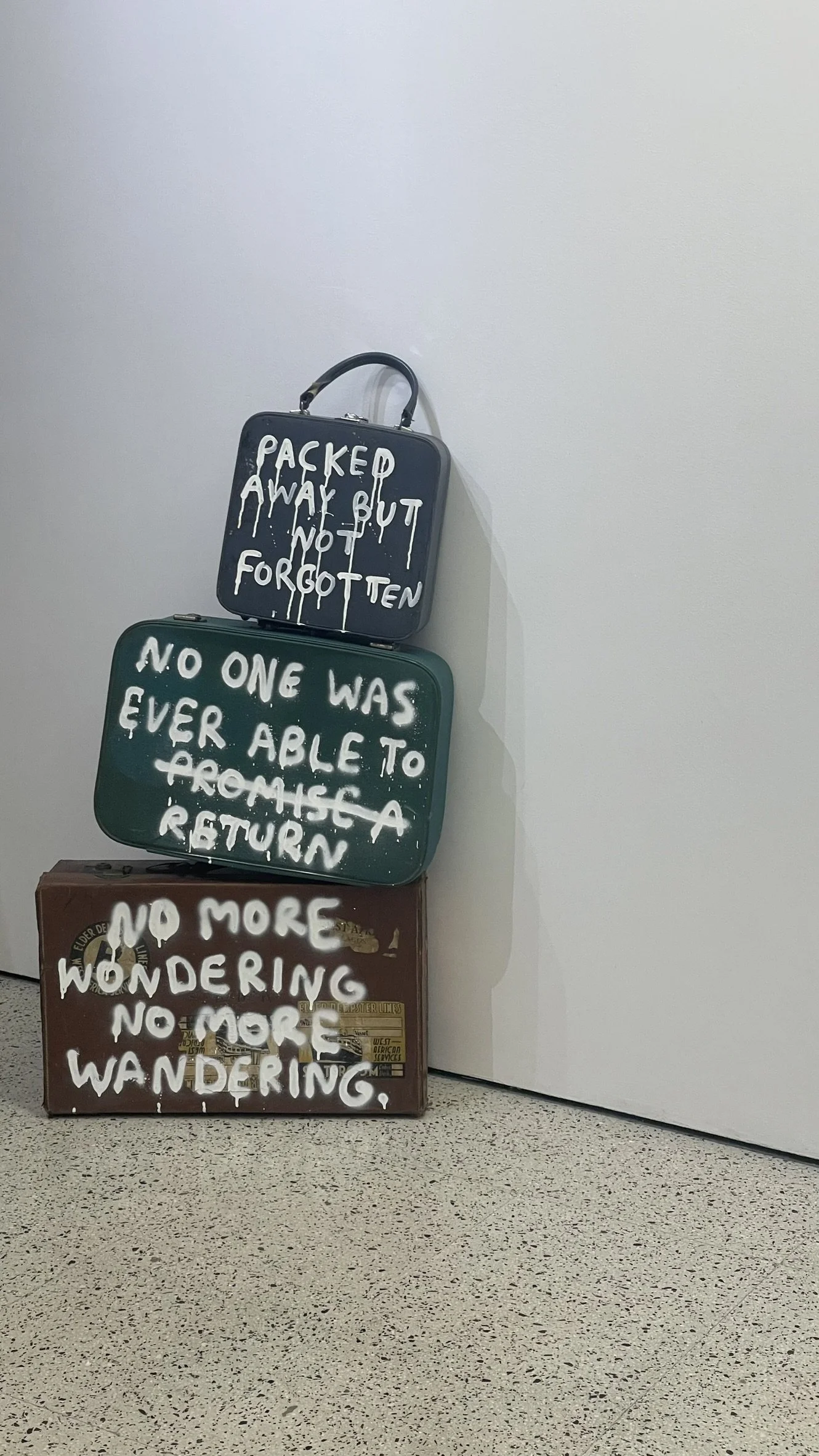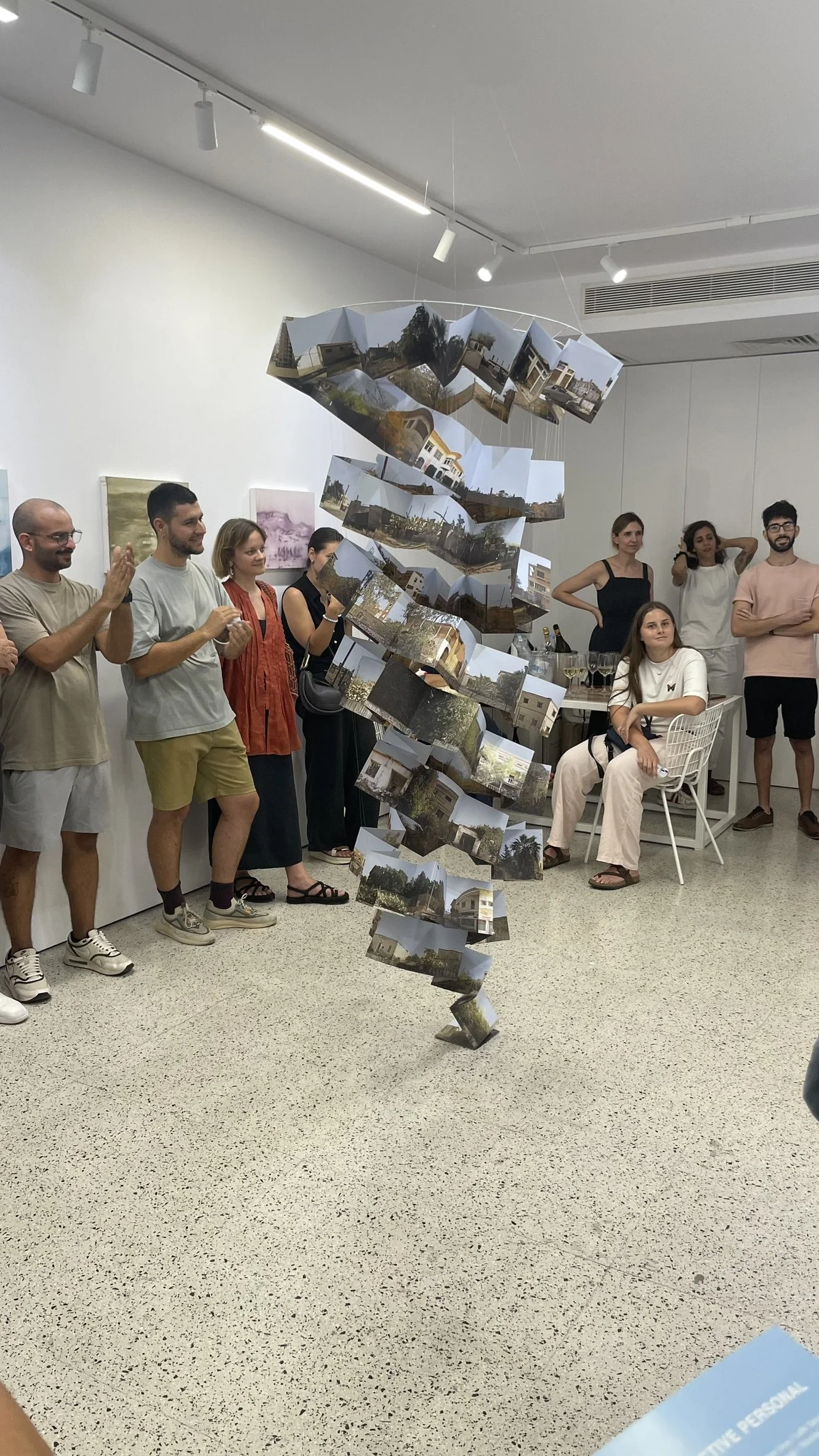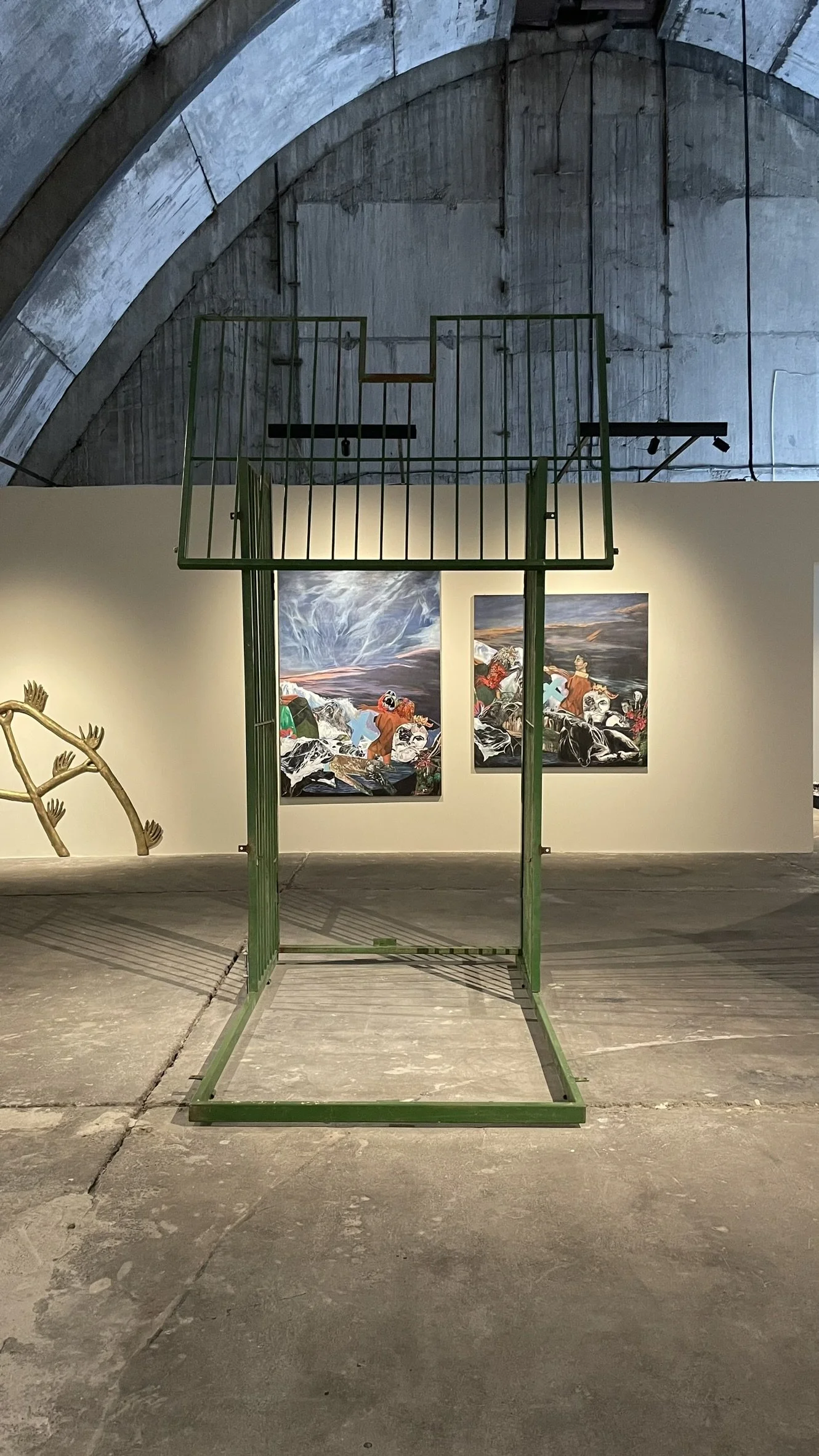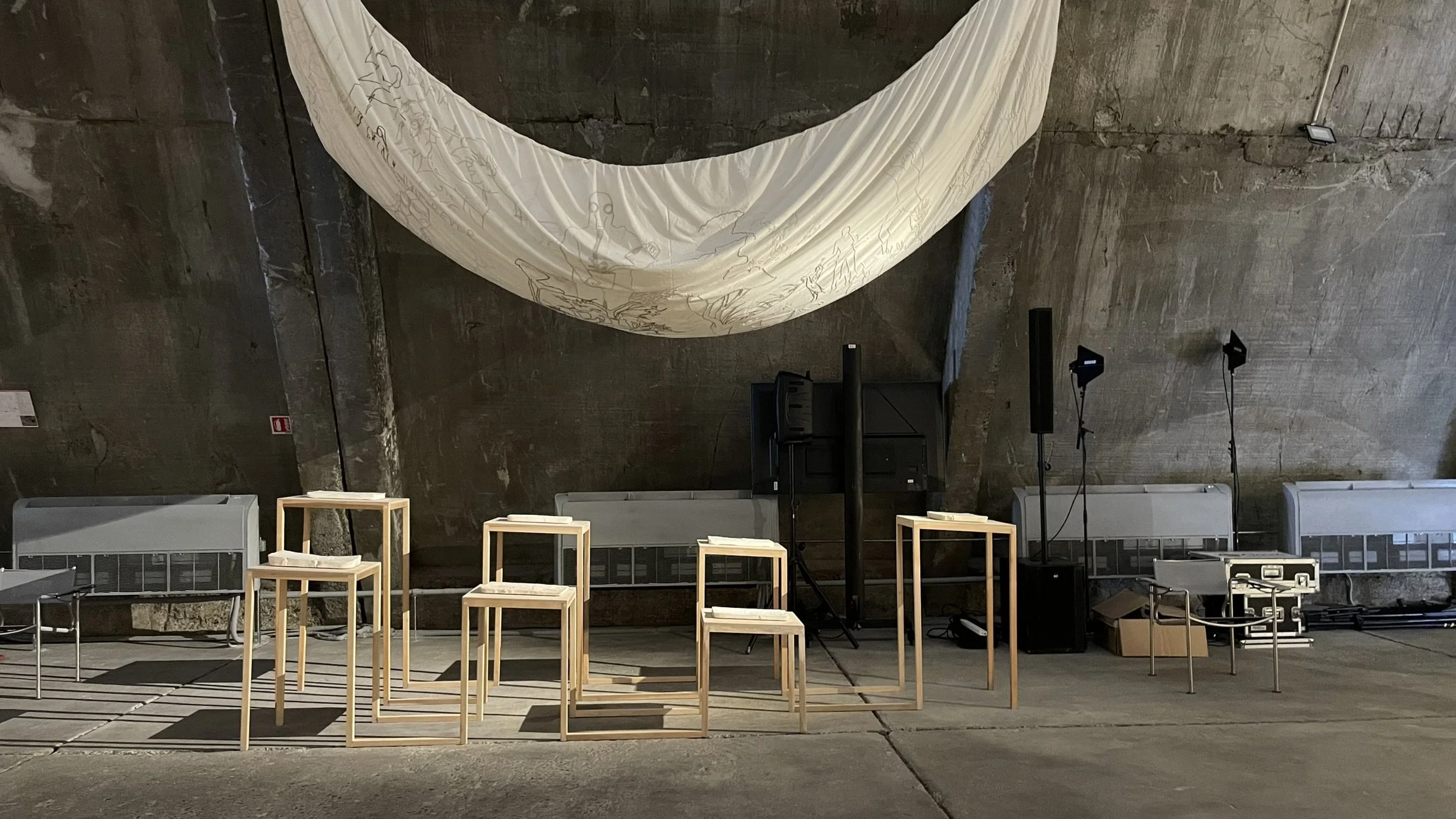Artists Capture the Complex Cypriot Narrative
50 years after the Turkish invasion of Cyprus, artists on the island and beyond use their work to honor the island’s history and initiate conversations around communal and political peace and coexistence
July 26, 2024 marked the 50th anniversary of the Turkish invasion of Cyprus. This invasion came days after a Greek military coup on the island where Greece wanted to unite Cyprus with its mainland. During the invasion, Turkey gained control of the northern half of Cyprus. It still occupies this territory today, and identifies it as the Turkish Republic of Northern Cyprus, which is only recognized by Turkey.
Political leaders in Cyprus and across the globe held numerous ceremonies and gatherings to honor this anniversary. They memorialized those who lost their lives during that time and spoke about how the invasion shaped the island’s modern history. This moment also initiated numerous conversations within the creative communities– from art to film to literature.
These creative communities spurred a sense of unity among the Greek-Cypriots and Turkish-Cypriots through exhibitions, artist-led conversations, and writing. These activities advanced conversations around the effects that the invasion had on both groups of people – across generations – as well as what can happen when they all start to work together for peace. The effects of these initiatives are still lingering today.
We outlined some of the latest exhibitions and creative moments that focused on Cyprus’ tumultuous history. Some of these events were devised in direct response to the anniversary of the Turkish invasion, while others discuss the Cypriot narrative more broadly.
The Edit Gallery
Duration: July 2024-September 2024
The Edit Gallery in Limassol, Cyprus just completed its three-month-long group exhibition entitled Collective Personal. It featured Greek-Cypriot and Turkish-Cypriot artists as well as an artist from Greece. Each of them explored Cyprus’ shared trauma and hope for peace and how these sentiments are passed down through generations. The show offered a space for reflection, understanding, and dialogue about the ongoing division between Greek-Cypriot and Turkish-Cypriot communities.
Mariandri curated the show with works by Danae Patsalou, Fikos, Ibrahim Ince, Lefki Savvidou, Lia Lapithi, Mariandrie, Nurtane Karagil, Nicolas Kyrillou, Yeti. Some of the pieces included: Nurtane Karagil’s digital manipulation on a postcard that replaced the blinking Turkish flag that is currently spread across Mount Pentadaktylos with the words “We all need therapy;” Lefki Savvidou’s Homecoming, which showed three stacked suitcases with spray painted thoughts about the realities of migration and shattered expectations; a collection of work by Ibrahim Ince that delved into the repressed memories of his family, which are intertwined with Cyprus’ internal conflicts; and Fikos’ painting Peace, which also exists as a mural in Nicosia’s old town.
To further the dialogue of the exhibition, the Edit Gallery activated the space with events. One night, each artist presented their work to an intimate group of guests. They discussed why and how they created their artworks, and while most of these artists were young and did not experience the division of Cyprus first-hand, they were one of the first generations to be born into a divided Cyprus. Their lives were shaped by stories their families passed down. One theme was prevalent throughout the entire night: the artists see everyone on the island as Cypriot. They hope that their artwork can help initiate a sense of unity and peace in this complex conflict.
There is an Island at the Cypriot High Commission
Duration: June 2024-August 2024
The There is an Island exhibition offered an exploration of memory, identity, and expectancy about Cyprus and its history. It was curated by Piece, an artist-led platform, and included works by both Greek Cypriot and Turkish Cypriot artists who live and work in the UK. This selection symbolized the unity and tenacity that the Cypriot people can endure. For the opening night, the team initiated thought-provoking dialogues with the attendees that emphasized the importance of remembering the past while fostering a motivation for unification and reconciliation.
Visitors were invited to reflect on the shared past of Cyprus through works in separate rooms:
Room 1: Memory and Observance. Artists such as Marina Emphietzi, Ilkan Koral, Androulla Michael, Michael Minas, Odysseas Odysseos, Michalis Pantelidis, Doros Partasides and Maria Trimikliniotis offered depictions of traumatic historical events and abstract expressions of personal journeys. This room provided a tribute to the enduring impact of the past of Cyprus.
Room 2: The Land and its People. This collection of work celebrated the materiality of the Cypriot landscape and the spirit of its people. Artists Michalis Karaiskos, Frixos Papantoniou, Hamit Üçok and Chris Neofytou highlighted the rich tapestry of the Cypriot culture and heritage through intimate portraits and indiscriminate landscapes.
Room 3: Window to the Future. Artists Savvas Theofanous, Christos Michaelides, Frixos Papantoniou and Helen Michael presented abstract interpretations of the future of Cyprus. Their works were characterized by layers of memory and history and challenged viewers to envision a hopeful future where imagination and inspiration prevail.
Cast of an Island by the PSI Foundation
Duration: July 2024-November 2024
The PSI Foundation’s Cast of an Island exhibition, curated by Nicos Chr. Pattichis, is an experience like no other in Cyprus. The show is set in an old carob warehouse in Limassol that was designed by architect Fivos Polidorides in 1960. This is one of the few, but growing, instances where an organization on the island adaptively reused an abandoned space to host an art event and create a new public experience.
Cast of an Island highlights a tumultuous historical era for Cyprus during the last 50 years and commemorates the tragedy of 1974 when the Turkish invasion led to the island’s division. It aims to showcase the identity of Cypriot art within the contemporary geopolitical context, and features 43 artists with over 120 works from the last 35 years. Many of the artworks are political in nature, and some are from before 2004 when the checkpoints at the green line in Nicosia opened. Some artists created new work inspired by the theme of the exhibition too.
The guide for the exhibition is a treasure map that leads visitors into thematic scenes. It opens with Panikos Tembriotis’ Warning Dangerous Building, a large-scale installation that sits alongside the water and is devised as an unfinished Parthenon. Throughout history, the Parthenon has become a symbol of a flourishing state– this unfinished structure, which showcases in detail all the signs of its construction process, seems to simultaneously declare the impossibility of its completion. Visitors then experience an amalgam of paintings, sculptures, installations, and motion inside the carob mill, which tell personal and public stories of the people of Cyprus. Andreas Kalli’s stone and gypsum sculptures adorn the walls, an embroidered sheet installation by Kyriaki Kosta hangs like an epitaph above a structure that refers to a cultural metaphor for the island of Cyprus, a photograph of a man carrying a statue of Aphrodite by Marina Shacola covers a wall, and flashy videos from Peter Eramian play on loop. The show ends with Socratis Socratous' work Katalogos: Cast of an Island about identity, contested territories, and displacement. You can view all of the artwork in the exhibition here.
Cypriot Folk Art Museum
Duration: July 2024 – January 2025
The exhibition at the Cypriot Folk Art Museum leads visitors on a tour of life before the invasion, during the war, and through the aftermath of it. Clothing, letters, photos, and other domestic artifacts are displayed. One of the curators, Dr. Yiannis Eliades, said that the exhibition is about the people who lived through this history and does not focus on the politics of it.
The exhibition is split into three rooms that represent life before, during, and after the war. The first room has items such as vases, embroidery, and schoolbooks from the towns of Kuthrea, Lefkoniko, and Karavas. Most of these items are from residents who brought them to the southern part of the island during their exodus or from when they visited their homes again when the north side opened in 2004. The second room features images of missing persons and paintings and drawings from refugee children that depict the chaos of the invasion. Some drawings show planes in the sky dropping bombs, others show a mother and daughter embracing. In the third room, images of families living in tents waiting for their missing persons hang on the walls. Letters between family members about the fate of their loved ones are set aside next to furniture that was donated from a family who were stuck in Eptakomi until 1976.
Cyprus Insula History – Memory – Reality by the Bank of Cyprus Cultural Foundation
Duration: July 2024-June 2025
At the Bank of Cyprus Cultural Foundation in the old town of Nicosia, an exhibition entitled Cyprus Insula History – Memory – Reality captures life in Cyprus from antiquity to the present day. The show has antiquities, folk art, contemporary artwork, historical maps, rare publications, manuscripts and engravings, and printed and digital archival material that convey the message of the insularity of Cyprus in a contemporary and interactive way. A section of the exhibition is dedicated to the island’s more tumultuous years from 1963-1964 to the aftermath of the 1974 Turkish invasion. There is a publication that accompanies this exhibition and interactive events such as round table discussions, experiential and educational programs, and guided tours and lectures. The multi-sensory exhibition takes its name from Codex 655, Ptolemy’s Geography (late 13th–early 14th century), which features the earliest known cartographic depiction of Cyprus, by Claudius Ptolemy in the 2nd century AD.
Cypria by Alex Christofi
This book by Alex Christofi was published this year and while it examines the Turkish invasion, it is not all about the divide. Christofi tells a beautiful narrative of Cyprus’ history – from its mythological characters to its first animal inhabitants to the stories of Saint Barnabas’ missions on the island. The tension between the Greek-Cypriots and Turkish-Cypriots is there, but there’s so much more to the island than just that. Christofi explains this and brings the tales of the island to life, in ways few other media have.
You can purchase the book here.
Famagusta
Andreas Georgiou’s new show Famagusta follows a family who lost their three-month-old baby during an episode of bombings from the Turkish invasion of Cyprus in 1974 to the present day where they are still looking for their lost child. Netflix planned to stream the show globally this September, but Turkey’s Foreign Ministry stopped that from happening. They claimed that the show serves “the black propaganda of the Greek-Cypriot administration of Southern Cyprus’ [Republic of Cyprus] that distorts historical events.” It will now only stream in Greece and Cyprus. If the show debuted on Netflix, it would have been the first time that a Cypriot-produced show was available to a global audience. It would have also shown the turbulent modern history of Cyprus to the world.





















